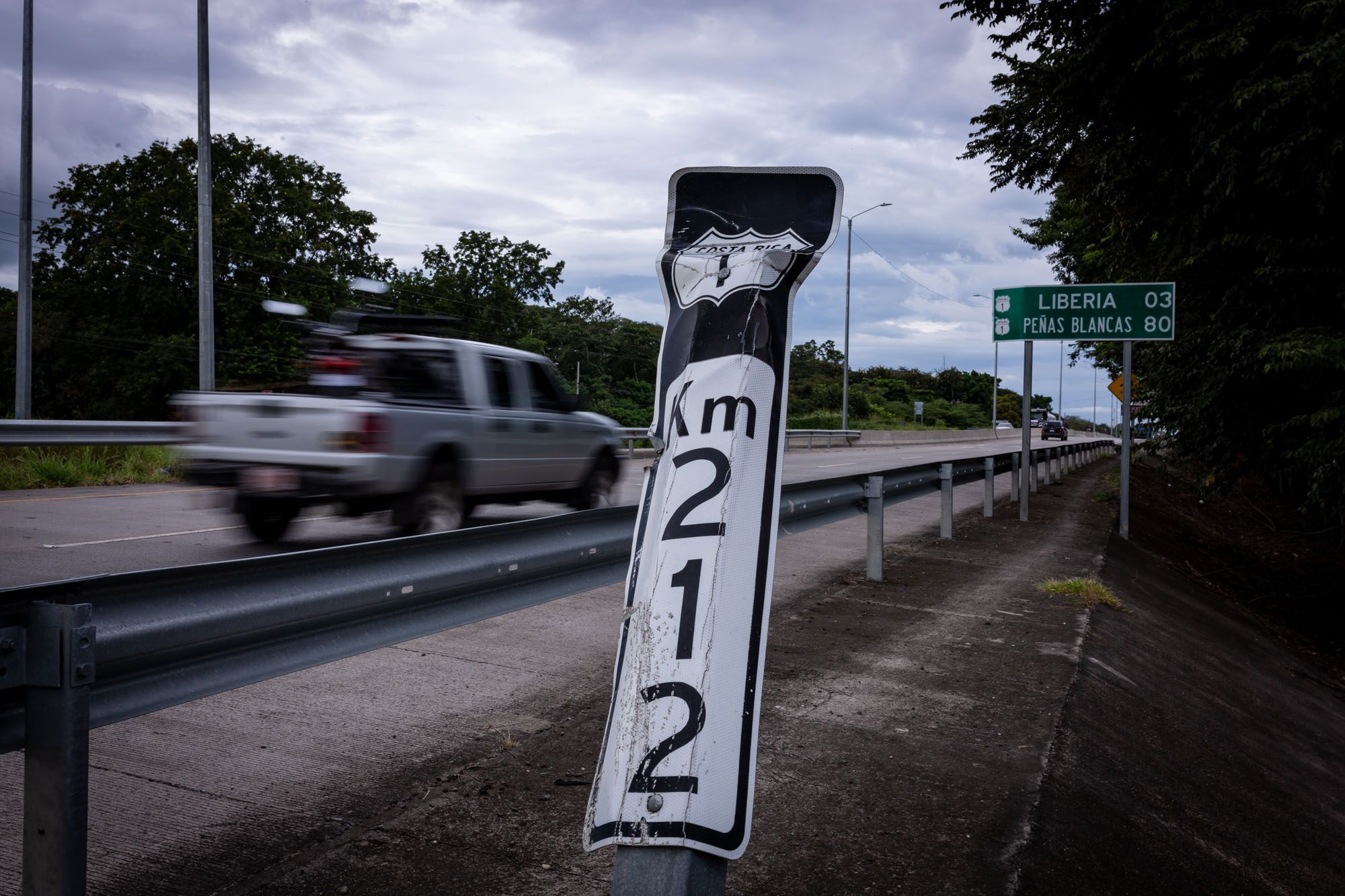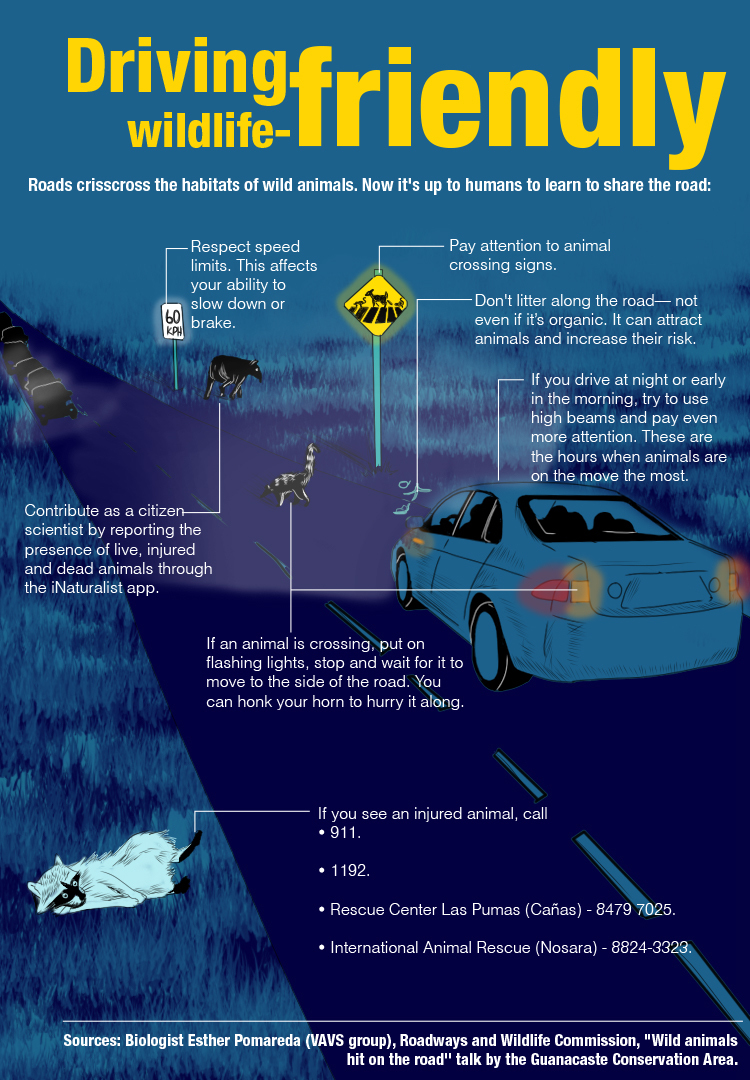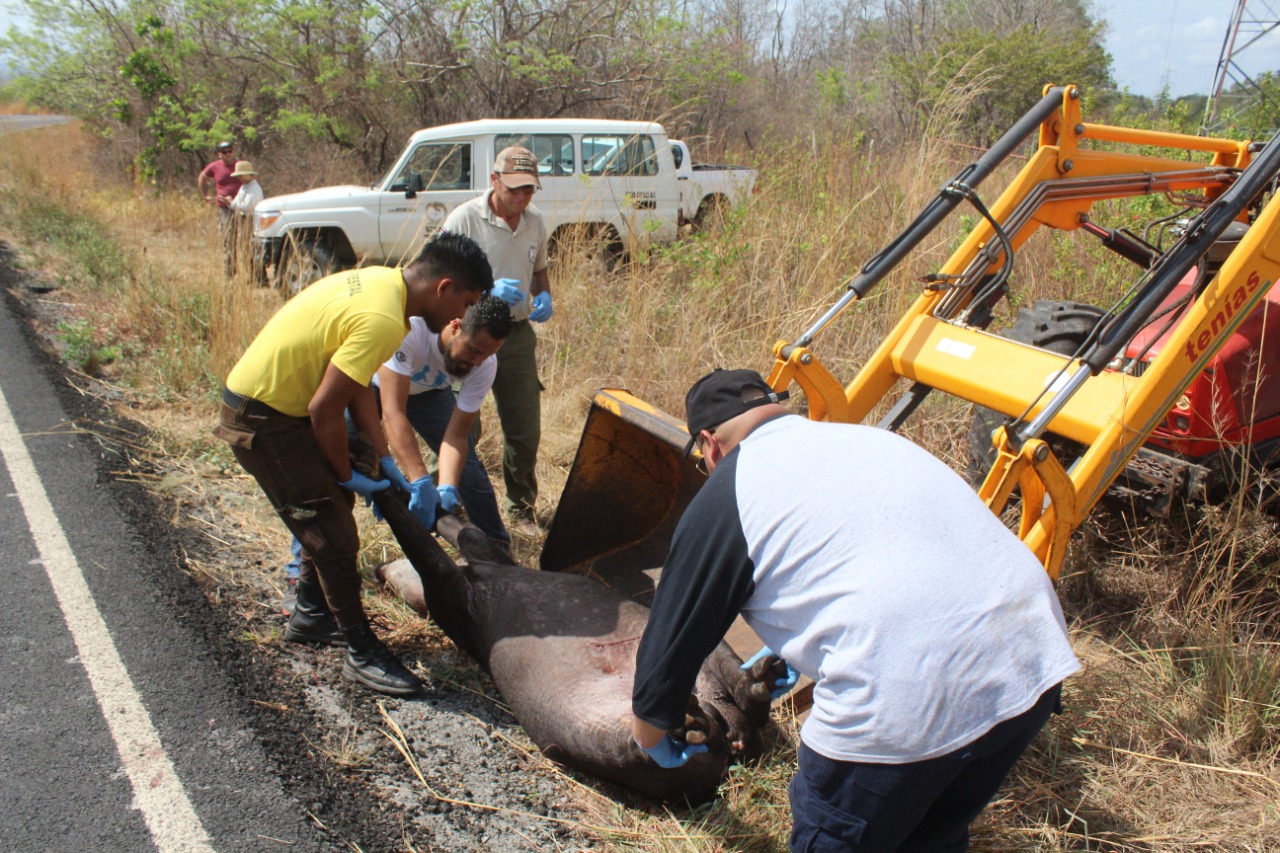
Spring break and weekends mean time off for many people. With friends or family, as a couple or alone, we plan trips to beaches, national parks, mountains, waterfalls, volcanoes… This diverse country has so many options.
For wild animals, there is no time off. They try to cross the roads that crisscross their habitats and there we are, humans, driving toward our destinations.
Learning to share the road with animals is just a small step— but not less important— to minimize roadkill. How can we do it? Here are seven tips.
Before reading them, remember to give priority to your safety, the safety of your passengers and of others traveling on the road. Now, here are the tips.
1.Pay attention to areas with animal crossing signs: These signs indicate the places where wild animals cross most frequently. The National System of Conservation Areas (SINAC) and animal welfare organizations have identified these places and, in conjunction with the Ministry of Public Works and Transportation (MOPT), have made efforts to put the signs up. Of course, the regent biologist at the Las Pumas Rescue Center, Esther Pomareda, reminds us that we can hit animals on any road that runs through a forest area.
2. Slow down: Respecting speed limits is a great step to reducing the death of tapirs, foxes, armadillos, frogs, monkeys, birds, snakes and other animals along roadways. Not only will you have more time to be able to react to an animal crossing, but also to anything else that might happen while you’re driving.
3. High beams, high alert: According to Pomareda, nights and early mornings are the times when animals cross the road more often. Whenever you can, drive with your high beams on to give you greater depth of vision. When you’ve spotted an animal on the road, try to switch to low beams so the bright lights don’t disorient them.

The Cañas – Limonal highway bisects one of the country’s 45 biological corridors, the most extensive of the Arenal Tempisque Conservation Area (ACAT), known as the Howler Monkey Pass. In its original design, the developers planned for more than 11 aerial and underground passages for animals as required by the Inter-American Development Bank (IDB), the entity that financed the project. Photo: Cesar Arroyo Castro
4. Don’t throw any type of garbage on the side of the road: You eat an apple, a banana or any kind of fruit and you think that because it’s organic waste, nothing will happen if you throw it into the weeds or on the ground next to the road. Wrong. This garbage attracts animals and increases their risk of being run over, explained Pomareda. It’s best to keep the garbage in the car until you can deposit it in a garbage can.
5. Stop and wait: If you see an animal in the middle of the road and it shows no signs of moving anytime soon, slow down, put on your flashing lights, stop and beep the horn to hurry it along.
6. Call to report it: If you see an injured animal on the road, report it to 911 or 1192, the Ministry of Environment and Energy’s auditor’s office. The people who answer these lines will take charge of getting help to rescue them.
Another option is to contact rescue centers. Here are the phone numbers of two in the province: Las Pumas Rescue Center in Cañas, 8479-7025, or International Animal Rescue Center in Nosara, 8824-3323.
Las Pumas, by the way, is doing research on felines on the road. If you see one alive, injured or dead, call and tell them about it. According to Pomareda, to date they have been counting two or three dead ocelots per month.
7. Help count them: With the iNaturalist app— available through PlayStore and AppleStore— you can be a citizen scientist by reporting if you see a live, dead or injured animal, preferably with a photograph of the animal. Here is a tutorial (in Spanish) on how to do it by Michelle Monge, a researcher at the National University Fauna Laboratory. You can also report sightings without the app at this website.
Bonus:
Before taking a trip, check this MOPT map for the wildlife crossing points that you’ll be driving through. That way, you can plan to leave ahead of time in order to slow down and drive more cautiously in those places.

Ilustration: Roberto Cruz




Comments